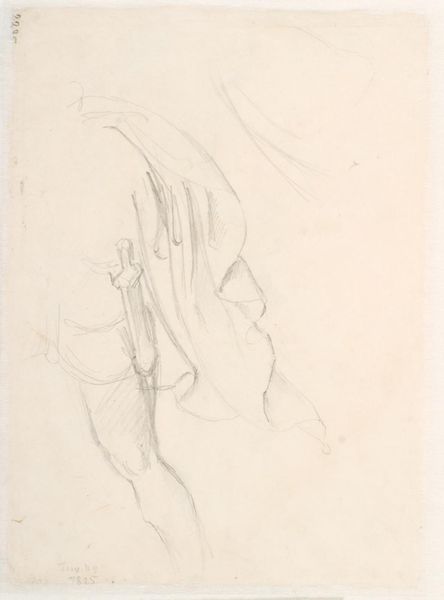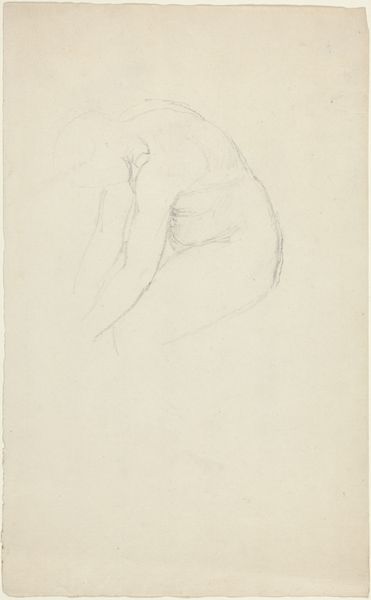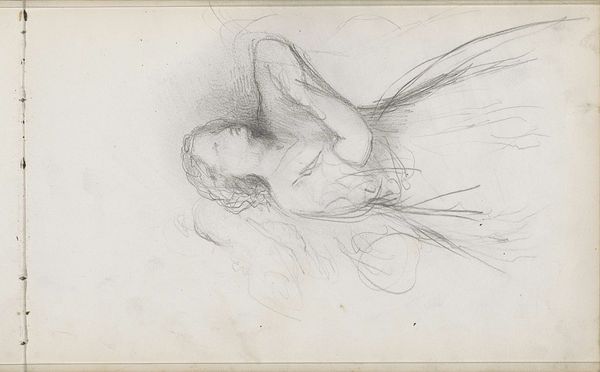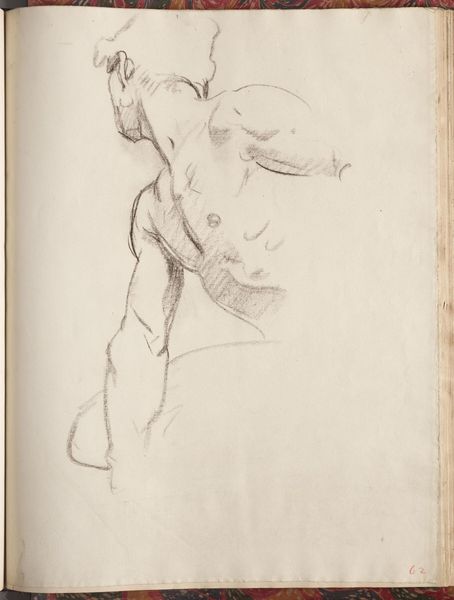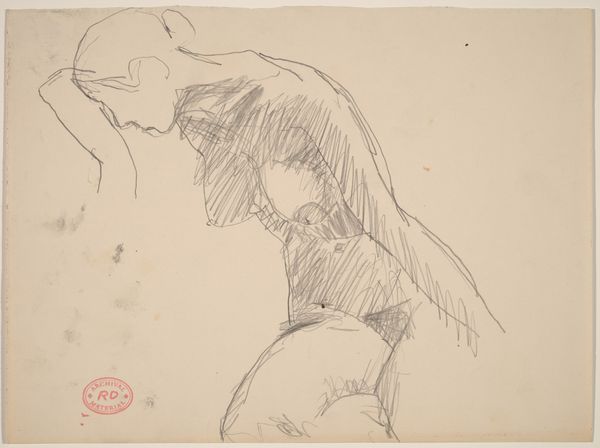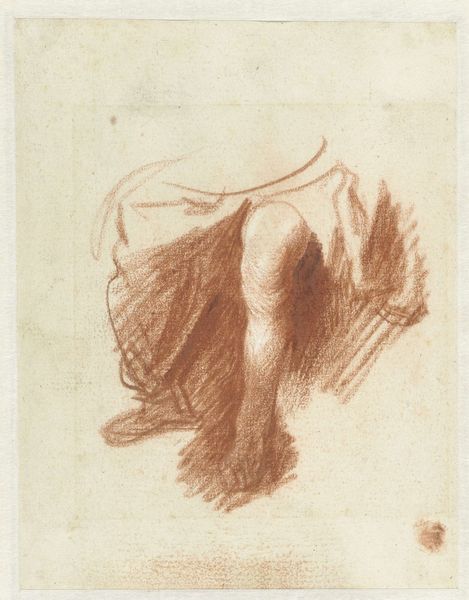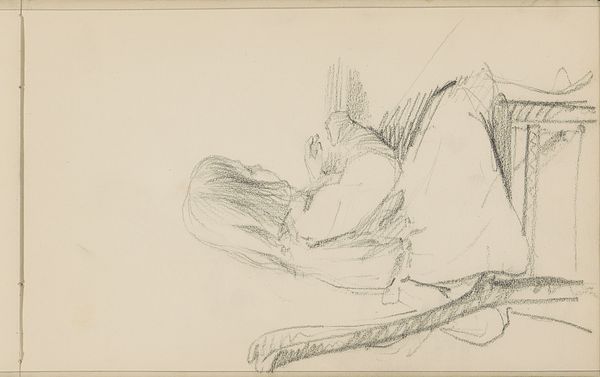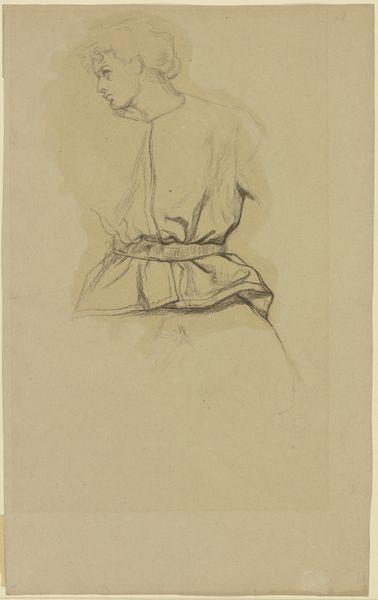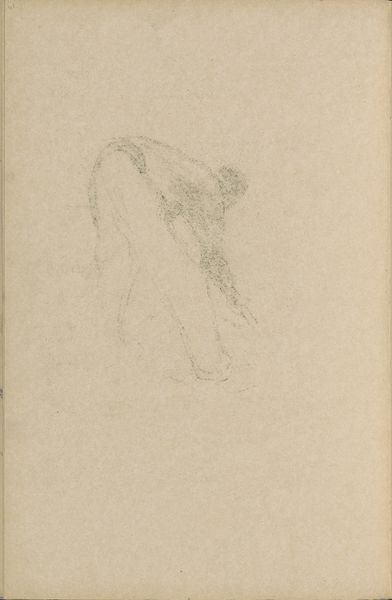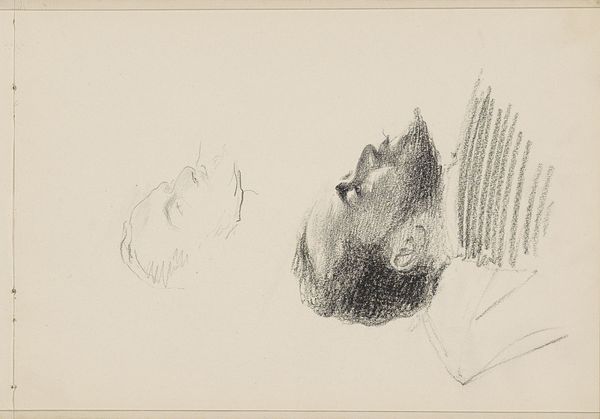
Study for a Male Figure in "Comus–The Measure" (recto); Reclining Male Nude (verso) 1864
0:00
0:00
Dimensions: Sheet: 11 7/16 × 8 3/4 in. (29 × 22.2 cm)
Copyright: Public Domain
George Richmond made this pencil drawing, "Study for a Male Figure in 'Comus–The Measure'" in 19th century England. It offers a glimpse into the relationship between artistic training, classical ideals, and the construction of masculinity in that period. Richmond's sketch reflects the academic emphasis on mastering the male nude as a cornerstone of artistic skill. In a society defined by rigid class structures and evolving notions of gender, the male body was both an object of aesthetic study and a symbol of power and control. Examining the institutions of art education, such as the Royal Academy, reveals how the male nude was used to convey moral virtue. The selection of models, the composition of the scene, and the intended audience all contributed to its meaning. By consulting period texts on art theory and social history, we can better understand how Richmond's drawing participated in broader cultural conversations about the ideal male form. In this way, we can appreciate art as a product of its time, shaped by the society and institutions that give it meaning.
Comments
No comments
Be the first to comment and join the conversation on the ultimate creative platform.

